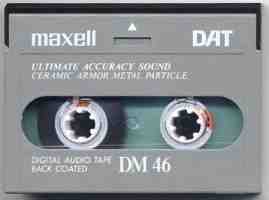Anyway, instead of
writing something reactionary and vitriolic like every other journalist,
I decided to sleep on it. Now, after a night of vivid fever dreams (and
more scenes involving a topless Zuckerberg than I initially
anticipated), I can tell you that I’ve seen the future of Facebook,
Oculus Rift, and virtual reality — and it’s pretty damn awesome.

One wonders what Carmack’s long-term plans are, after being acquired by Facebook
Be patientFirst,
it’s important to remember that, in the short term, the Oculus Rift is
unlikely to be negatively affected by this acquisition. According to Oculus VR co-founder Palmer Luckey,
thanks to Facebook’s additional resources, the Oculus Rift will come to
market “with fewer compromises even faster than we anticipated.” Luckey
also says there won’t be any weird Facebook tie-ins; if you want to use
the Rift as a gaming headset, that option will still be available.Longer-term, of course, the picture is a little murkier. Zuckerberg’s post explaining the acquisition
makes it clear that he’s more interested in the non-gaming applications
of virtual reality. “After games, we’re going to make Oculus a platform
for many other experiences… This is really a new communication
platform… Imagine sharing not just moments with your friends online, but
entire experiences and adventures.”

Facebook for your face: An Oatmeal comic that successfully predicted Facebook’s acquisition some months ago.
 |
| |
Second Second LifeUltimately,
I think Facebook’s acquisition of Oculus VR is a very speculative bet
on the future. Facebook knows that it rules the web right now, but
things can change very, very quickly. Facebook showed great savviness
when it caught the very rapid consumer shift to smartphones — and now
it’s trying to work out what the Next Big Thing will be. Instagram,
WhatsApp, Oculus VR — these acquisitions all make sense, in that they
could be disruptive to Facebook’s position as the world’s most important
communications platform.While you might just see the Oculus Rift
as an interesting gaming peripheral, it might not always be so. In
general, new technologies are adopted by the military, gaming, and sex
industries first — and then eventually, as the tech becomes cheaper and
more polished, they percolate down to the mass market. Right now, it’s
hard to imagine your mom wearing an Oculus Rift — but in five or 10
years, if virtual reality finally comes to fruition, then such a
scenario becomes a whole lot more likely.
Who wouldn’t want to walk around Second Life with a VR headset?
For
me, it’s easy to imagine a future Facebook where, instead of sitting in
front of your PC dumbly clicking through pages and photos with your
mouse, you sit back on the sofa, don your Oculus Rift, and walk around
your friends’ virtual reality homes. As you walk around the virtual
space, your Liked movies would be under the TV, your Liked music would
be on the hi-fi (which is linked to Spotify), and your Shared/Liked
links would be spread out on the virtual coffee table. To look through
someone’s photos, you might pick up a virtual photo album. I’m sure
third parties, such as Zynga and King, would have a ball developing
virtual reality versions of
FarmVille and
Candy Crush Saga.
Visiting fan pages would be pretty awesome, too — perhaps Coca-Cola’s
Facebook page would be full of VR polar bears and and happy Santa
Clauses, and you’d be able to hang out with the VR versions of your
favorite artists and celebrities too, of course.And then, of
course, there are all the other benefits of advanced virtual reality —
use cases that have been bandied around since the first VR setups back
in the ’80s. Remote learning, virtual reality Skype calls, face-to-face
doctor consultations from the comfort of your home — really, the
possible applications for an advanced virtual reality system are endless
and very exciting.But of course, with Facebook’s involvement,
those applications won’t only be endless and exciting — they’ll make you
fear for the future of society as well. As I’ve written about
extensively in the past, both Facebook and Google are very much in the
business of accumulating vast amounts of data, and then monetizing it. Just last week, I wrote about Facebook’s facial recognition algorithm
reaching human levels of accuracy. For now, Facebook and Google are
mostly limited to tracking your behavior on the web — but with the
advent of wearable computing, such as Glass and Oculus Rift, your
real-world behavior can also be tracked.And so we finally reach
the crux of the Facebook/Oculus story: The dichotomy of awesome,
increasingly powerful wearable tech. On the one hand, it grants us with
amazingly useful functionality and ubiquitous connectivity that really
does change lives. On the other hand, it warmly invites corporate
entities into our private lives. I am very, very excited about the
future of VR, now that Facebook has signed on — but at the same time,
I’m incredibly nervous about how closely linked we are becoming to our
corporate overlords.































 An e-ink screen showing the "ghost" of a prior image
An e-ink screen showing the "ghost" of a prior image






 About
About Tags
Tags Popular
Popular Google+
Google+